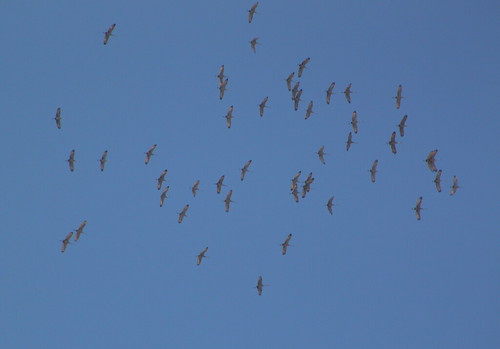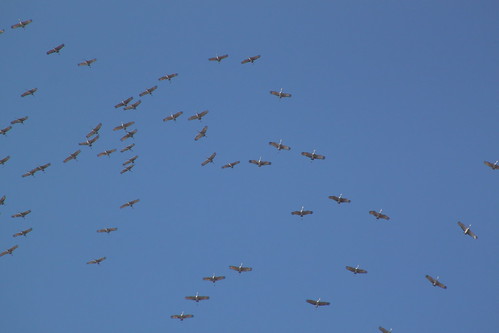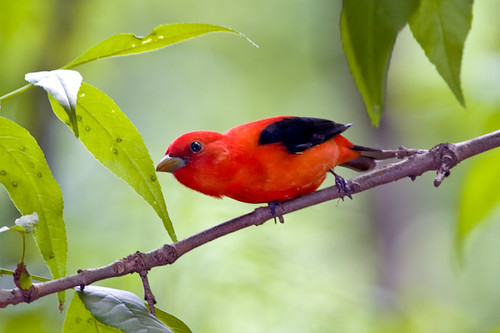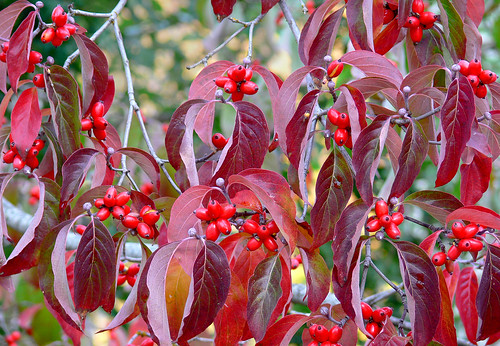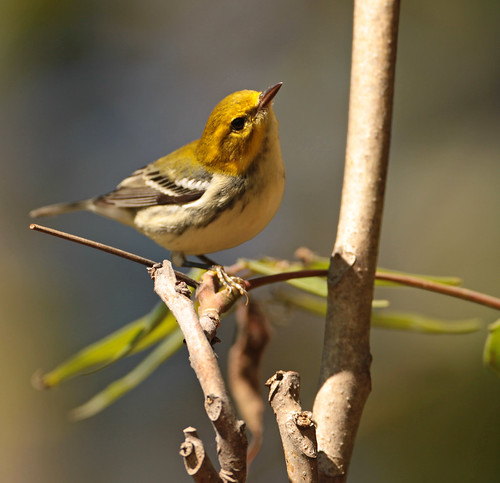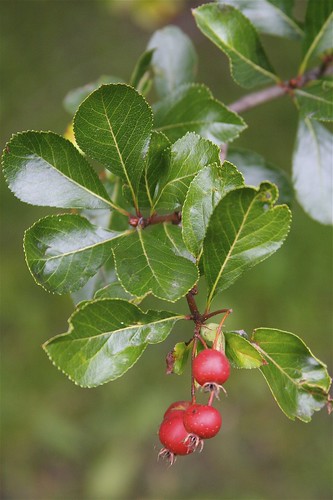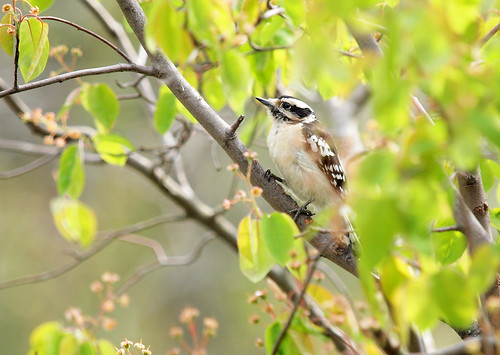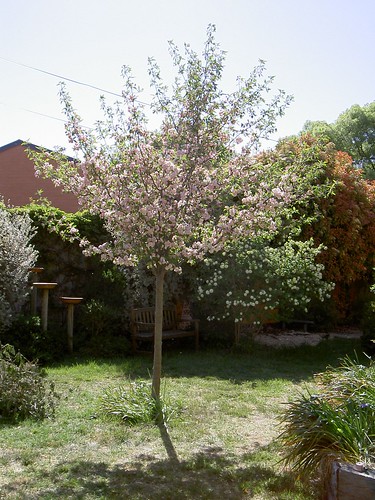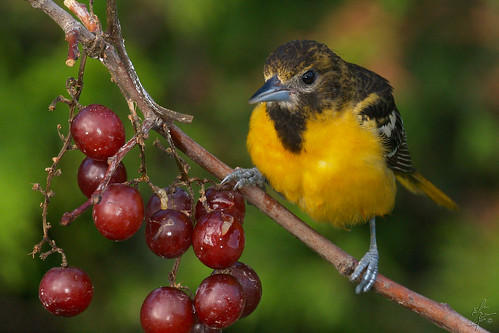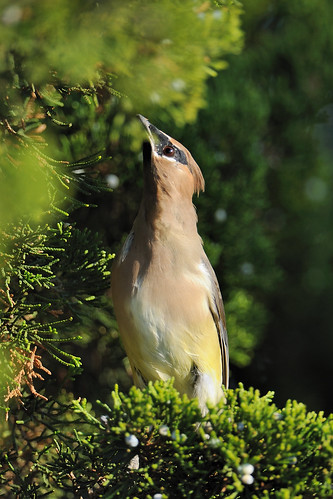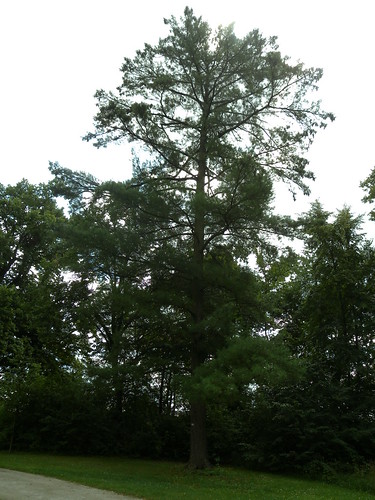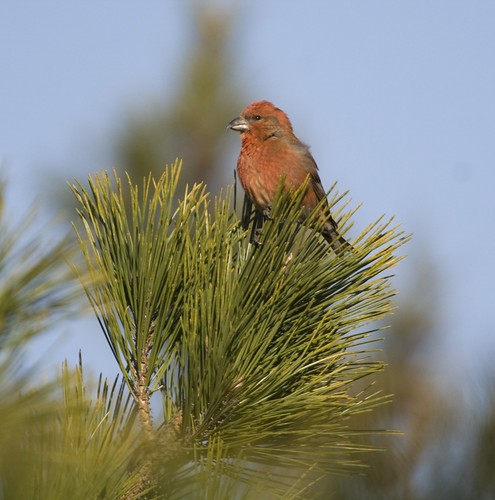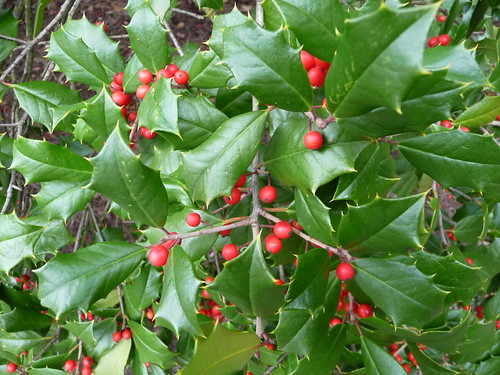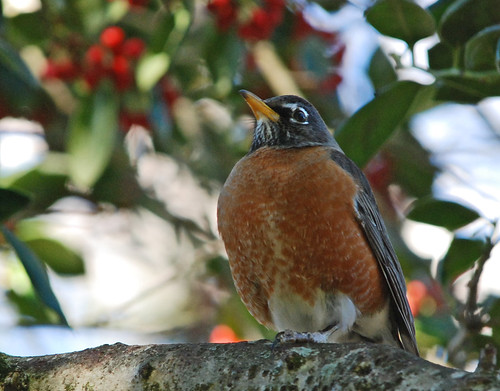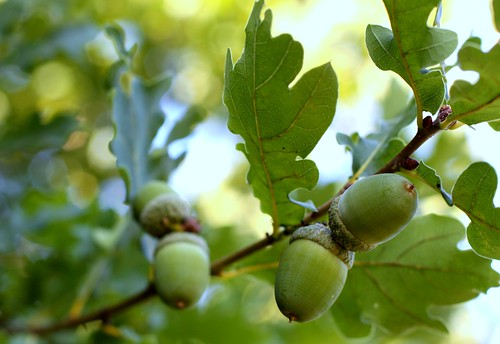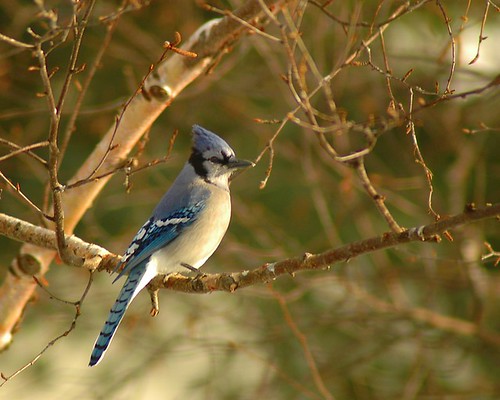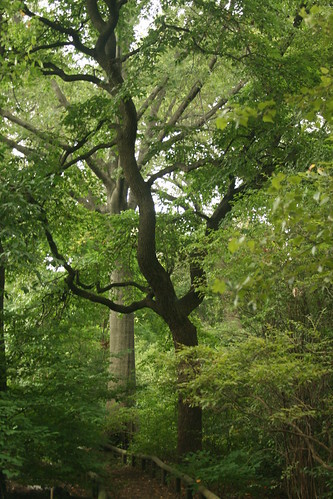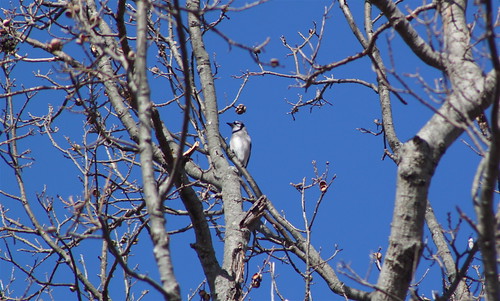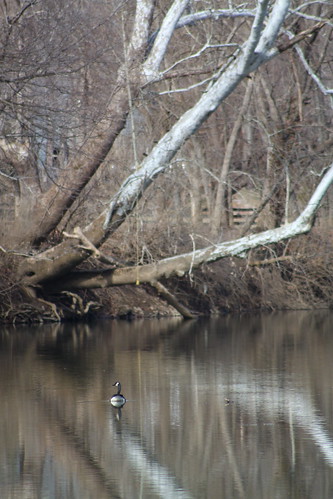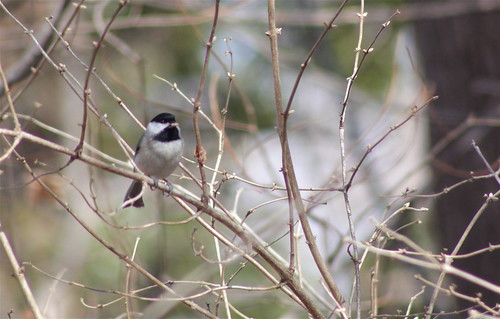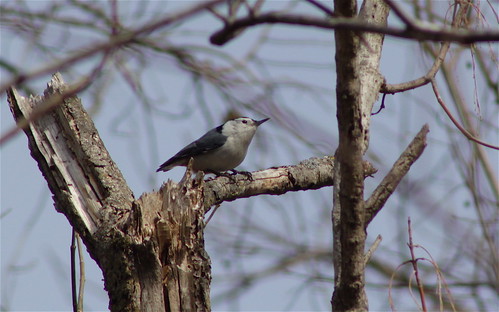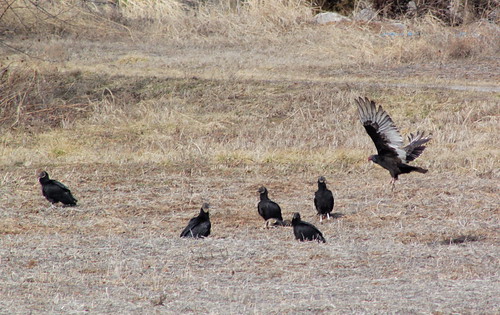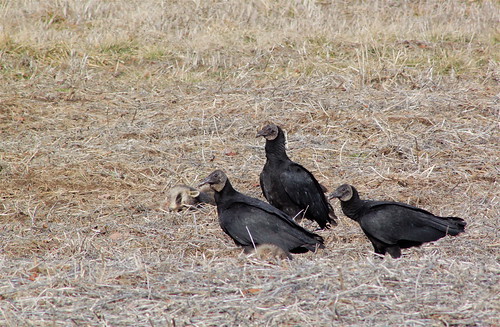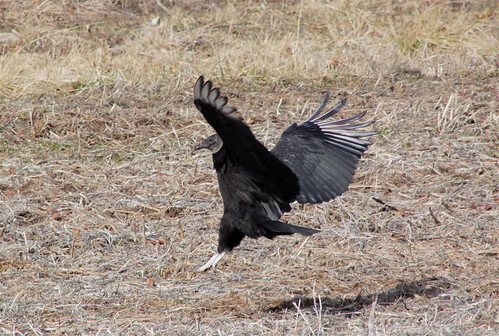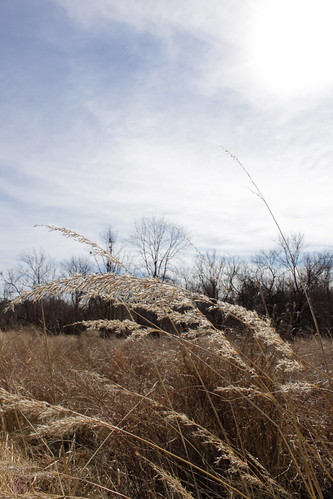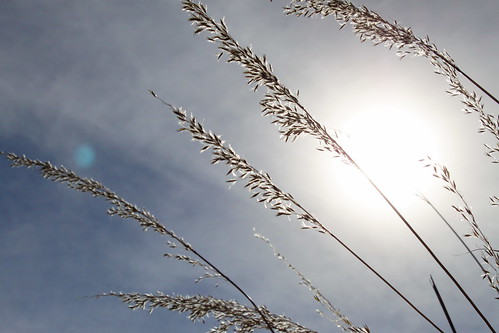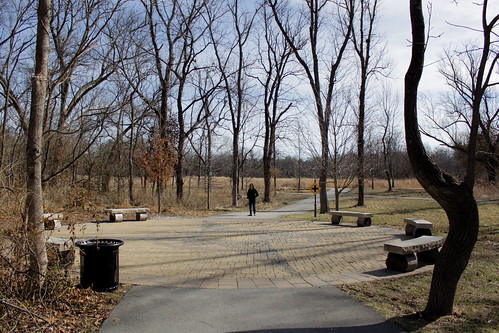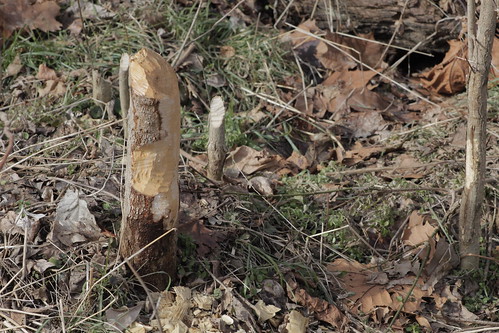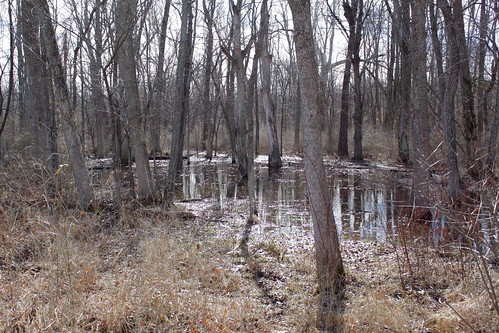Sunday, February 27, 2011
Sandhill Cranes in KY
The Sandhill Cranes have been gathering around Cecilia, KY, southwest of E-town for the past couple weeks. I saw several flyovers all week and I imagine by now there are few left as most have flown north. This was a flock from Friday that flew over.
 Posted in: sandhill crane
Posted in: sandhill cranePlantMaps
I've been doing research for a presentation I'm giving on gardening for birds and I came across this cool website called PlantMaps. The website lets you browse a list of plants (mostly trees) and maps the range of your selected plant on Goolge Maps. Here are a couple examples, click on the name of the tree below to go to the interactive map:
There is more really cool stuff on the site too. You can check out hardiness zone maps, Kentucky's ecoregions, drought conditions, and first and last frost dates for the state. Pretty cool stuff, thought I would pass it along.
There is more really cool stuff on the site too. You can check out hardiness zone maps, Kentucky's ecoregions, drought conditions, and first and last frost dates for the state. Pretty cool stuff, thought I would pass it along.
Wednesday, February 23, 2011
Gardening for Birds in Kentucky: Trees II
Part two of the series of trees that are best to plant for birds.
Black Cherry (Prunus serotina) - Few trees attract as many birds as the Black Cherry. Native to every state east of the great plains, this sun loving pioneering species is often one of the first trees to colonize old fields. It can grow as tall as 50 feet with a spread of 30 feet. The leaves are simple with a serrated margin. The fragrant flowers are small with five white petals and about 20 stamens. The fruit ripen in fall and are a favorite of at least 47 different species of birds.
Black Cherry (Prunus serotina) - Few trees attract as many birds as the Black Cherry. Native to every state east of the great plains, this sun loving pioneering species is often one of the first trees to colonize old fields. It can grow as tall as 50 feet with a spread of 30 feet. The leaves are simple with a serrated margin. The fragrant flowers are small with five white petals and about 20 stamens. The fruit ripen in fall and are a favorite of at least 47 different species of birds.
Flowering Dogwood (Cornus florida) -Widely known for its beautiful flowers in the spring and breathtaking fall foliage, this small tree is also very important to birds and wildlife. They usually grow 10-30 feet tall with a spread of 25 feet. The berries first ripen in August and provide fuel for songbirds during fall migration, like the Black-throated Green Warbler below. Around 35 other species of songbirds enjoy the fruit of the Flowering Dogwood.
Hawthorns (Crataegus spp.) - This group of small, round-top trees and large shrubs are difficult to tell apart, fortunately they all bear small pome fruits that are enjoyed by birds. They are easily recognized by single large, unbranched spines that grow from leaf axils. The dense, forked branches provide great sites for nesting cardinals, jays, and robins.
Downy Serviceberry (Amelanchier arborea) -This small eastern native is one of the first trees to bloom in spring. The leaves are ovate or elliptical with pointed tips and finely serrated margins. A characteristic useful for identification is that the young leaves emerge downy on the underside. It grows to a height of 20-40 feet with a spread of 30 feet. It too is valued for its berries that ripen starting in June. It is a favorite of Ruffed Grouse, Wood Thrush, and the common and popular Downy Woodpecker.
Flowering Crabapple (Malus spp.) - Chances are you may already have a cultivar of this tree growing somewhere in your garden. Crabapples are a favorite because of their beautiful flowers in the spring and their berries that stay on the branches into winter, bringing some much needed color into the cold months. The penchant of the tree to hang on to its fruits is a great thing for songbirds as well. The berries are readily consumed by American Robins, Cedar Waxwings, and many others. It is best to select the varieties with small fruits, like: Arnold, Bob White, Donald Wyman, Dorothea, Jacky, Mary, snowbank, and tea.
http://www.flickr.com/photos/ericbegin/699693325/in/faves-47015031@N07/
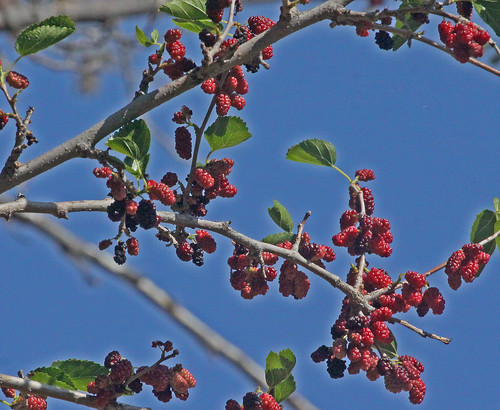
http://www.flickr.com/photos/jroldenettel/4641982320/
Red Mulberry (Morus rubra) -This small tree is one of the most attractive to songbirds, which is the reason it is sometimes left out of the garden. Birds consume and (cough) de-consume the berries so quickly and voraciously that it often leaves a mess on patios and sidewalks. The seed are spread by birds as well and this leads to many seedlings sprouting up in places gardeners may not want them. That is why it is recommended to plant this tree in a corner away from the main garden. That way it will still invite birds to your garden but won't be such a nuisance. The distinctive leaves are alternate, simple, broadly cordate, with a shallow notch at the base, typically unlobed on mature trees although often with 2-3 lobes on young trees. They can grow to 25-40 feet with a spread of 50 feet. It is dioecious, meaning you will need both male and female trees for a fruit crop. They are wind pollinated so this may not be necessary if there are other mulberries nearby. Their fruits are enjoyed by as many as 44 species of songbirds.

http://www.flickr.com/photos/jroldenettel/4641982320/
Monday, February 21, 2011
Gardening for Birds in Kentucky: Trees
It is getting to be that time of year where we stumble out of our winter domiciles, shake off the funk of months of snowstorms and cabin fever, and look at our gardens, realizing that we have only a few weeks before our flowers and trees start blooming. You can almost see the soft layers of delicate Flowering Dogwood flowers and the bright pink sparkle of the Eastern Redbuds now. Imagine the bright white flowers of the Downy Serviceberry and the varieties of pinks and reds of the Flowering Crabapple trees. While we all know this time of the year is beautiful because of the trees, what we may not know is just how important those trees are to birds and wildlife. That is why I am putting together this short list of trees that grow in and that are native to Kentucky that provide food, shelter, or nesting sites for our resident songbirds and our beautiful migrants.
Eastern Red Cedar (Juniperus virginiana) - This juniper can grow to a height of 50 ft with a spread of 15-25 ft and grows in just about any soil but prefers limestone-derived soils, making it perfect for Kentucky. This tree is an early colonizer of fields where it soaks up sunlight with its scaly leaves. The bark is often reddish-brown and fibrous. These trees are dioecious, meaning male and female flowers bear on separate trees. You will need to plant several in close proximity to guarantee fertilization and thus a robust crop of fruits. This common tree produces blue berry-like cones which are present on trees almost year round. They are most important to birds in winter when they provide shelter from the elements and food. The Cedar Waxwing gets its namesake from this tree because they are so fond of the fruit. At least 53 other species of birds are known to eat its fruit.
Eastern White Pine (Pinus strobus) -This tall and compact pine is more common in the north, preferring cool and humid climates, but does grow in the eastern part of the state. It can get as tall as 100 ft. and has a spread of 20-25 ft. The leaves (needles) are in fascicles, meaning bundles, of five (rarely 3 or 4), with a deciduous sheath. They are flexible, bluish-green, and finely serrated. This tree provides food, shelter, and nesting sites for many birds. It is favored by Red Crossbills because of its seeds and by Carolina Chickadees, nuthatches, and woodpeckers because of its soft bark that makes excavating a nest hole quick and easy.
American Holly (Ilex opaca) - The evergreen foliage of the American Holly makes it a useful cover tree throughout the year. It can grow as tall as 50 ft. and spread to 20 ft. The leaves are alternate, broad, stiff, yellow green and dull matte to sub-shiny above. The edges are curved into several sharp, spike-like points, and a wedge-shaped base and acute apex. Another dioecious tree so be sure you plant several to ensure a good berry crop. The fruits are a bright red and are appealing to many species of birds. They are a real favorite of American Robins which descend on the trees in droves in the winter.
Oaks (Quercus spp.) - Oaks are the work horses of the tree world. They are beneficial to birds and other wildlife in every season. They provide nesting sites and acorns in the fall, which are relished by many birds. There are a variety of species to plant and any of them would be a superb addition to your backyard. Oaks grow to great heights but take several years to mature. Be sure to plant them in an area where there will be ample room for the tree to grow. In autumn the acorns fall, providing a bonanza of food for birds, perhaps enjoyed most by Blue Jays and Wild Turkey.
Black Tupelo (Nyssa sylvatica) - Otherwise known as the Black Gum, this tree can grow to a height of 60 feet with a spread of 30 feet. The leaf of Black Tupelo is variable in size and shape. It can be oval, elliptical or obovate, with entire, often wavy margins. The leaf turns purple in autumn, eventually becoming an intense bright scarlet. The fruit is a fleshy blue drupe which ripens as early as August and as late as October. It is favored by Wood Thrush, Northern Flicker, and Rose-breasted Grosbeak.
Eastern Red Cedar (Juniperus virginiana) - This juniper can grow to a height of 50 ft with a spread of 15-25 ft and grows in just about any soil but prefers limestone-derived soils, making it perfect for Kentucky. This tree is an early colonizer of fields where it soaks up sunlight with its scaly leaves. The bark is often reddish-brown and fibrous. These trees are dioecious, meaning male and female flowers bear on separate trees. You will need to plant several in close proximity to guarantee fertilization and thus a robust crop of fruits. This common tree produces blue berry-like cones which are present on trees almost year round. They are most important to birds in winter when they provide shelter from the elements and food. The Cedar Waxwing gets its namesake from this tree because they are so fond of the fruit. At least 53 other species of birds are known to eat its fruit.
Eastern White Pine (Pinus strobus) -This tall and compact pine is more common in the north, preferring cool and humid climates, but does grow in the eastern part of the state. It can get as tall as 100 ft. and has a spread of 20-25 ft. The leaves (needles) are in fascicles, meaning bundles, of five (rarely 3 or 4), with a deciduous sheath. They are flexible, bluish-green, and finely serrated. This tree provides food, shelter, and nesting sites for many birds. It is favored by Red Crossbills because of its seeds and by Carolina Chickadees, nuthatches, and woodpeckers because of its soft bark that makes excavating a nest hole quick and easy.
American Holly (Ilex opaca) - The evergreen foliage of the American Holly makes it a useful cover tree throughout the year. It can grow as tall as 50 ft. and spread to 20 ft. The leaves are alternate, broad, stiff, yellow green and dull matte to sub-shiny above. The edges are curved into several sharp, spike-like points, and a wedge-shaped base and acute apex. Another dioecious tree so be sure you plant several to ensure a good berry crop. The fruits are a bright red and are appealing to many species of birds. They are a real favorite of American Robins which descend on the trees in droves in the winter.
Oaks (Quercus spp.) - Oaks are the work horses of the tree world. They are beneficial to birds and other wildlife in every season. They provide nesting sites and acorns in the fall, which are relished by many birds. There are a variety of species to plant and any of them would be a superb addition to your backyard. Oaks grow to great heights but take several years to mature. Be sure to plant them in an area where there will be ample room for the tree to grow. In autumn the acorns fall, providing a bonanza of food for birds, perhaps enjoyed most by Blue Jays and Wild Turkey.
Black Tupelo (Nyssa sylvatica) - Otherwise known as the Black Gum, this tree can grow to a height of 60 feet with a spread of 30 feet. The leaf of Black Tupelo is variable in size and shape. It can be oval, elliptical or obovate, with entire, often wavy margins. The leaf turns purple in autumn, eventually becoming an intense bright scarlet. The fruit is a fleshy blue drupe which ripens as early as August and as late as October. It is favored by Wood Thrush, Northern Flicker, and Rose-breasted Grosbeak.
Check back for part two of the series in the next few days, where we will look at some of the most popular berry producing trees that birds just love, such as Mulberry, Black Cherry, and Flowering Dogwood.
Saturday, February 19, 2011
Great Backyard Bird Count
The Great Backyard Bird Count started Thursday and today was my first day participating. I headed back out to Miles Park around noon to see what was around. The answer: not much. We checked out the field areas first and around the fishing ponds and the predominate bird was Song Sparrow. Actually come to think of it, every bird was a Song Sparrow. Maybe a Blue Jay or two were flying overhead, but other than that not much else. I had my camera with me but couldn't manage to get any shots of the Song Sparrows even though they were everywhere.
We moved on to the trail that runs along Floyd's Fork. The birding there was better, but nothing spectacular. There were plenty of common woodland birds singing and flying about. Mostly Carolina Chickadees, Tufted Titmouse, White-breasted Nuthatch, and various woodpeckers. A single Belted Kingfisher was flying back and forth over the fork. I was hoping for some Wood Ducks since I saw a pair yesterday at another location, but no luck. There was a single Canada Goose floating around the canoe launch area. Usually these are one of my least favorite birds, but it was quite beautiful to watch the goose paddle around by itself though the reflections of the sycamores. Maybe it was beautiful because the bird was in a natural setting and not standing in the mall parking lot as they are so often found.
Here is the full list form the day. Like I said, not much. I should have made it out earlier and I'm sure there would have been more to see. I was hoping to get some more pics and at this time of the year it is tough to do that unless you have the sun high in the sky. Oh well. Better luck tomorrow.
Canada Goose - 3
We moved on to the trail that runs along Floyd's Fork. The birding there was better, but nothing spectacular. There were plenty of common woodland birds singing and flying about. Mostly Carolina Chickadees, Tufted Titmouse, White-breasted Nuthatch, and various woodpeckers. A single Belted Kingfisher was flying back and forth over the fork. I was hoping for some Wood Ducks since I saw a pair yesterday at another location, but no luck. There was a single Canada Goose floating around the canoe launch area. Usually these are one of my least favorite birds, but it was quite beautiful to watch the goose paddle around by itself though the reflections of the sycamores. Maybe it was beautiful because the bird was in a natural setting and not standing in the mall parking lot as they are so often found.
Here is the full list form the day. Like I said, not much. I should have made it out earlier and I'm sure there would have been more to see. I was hoping to get some more pics and at this time of the year it is tough to do that unless you have the sun high in the sky. Oh well. Better luck tomorrow.
Canada Goose - 3
Turkey Vulture - 4
Red-tailed Hawk - 2
Mourning Dove - 4
Belted Kingfisher - 1
Red-bellied Woodpecker - 4
Downy Woodpecker - 3
Blue Jay - 6
American Crow - 6
Carolina Chickadee - 8
Tufted Titmouse - 13
White-breasted Nuthatch - 5
Northern Mockingbird - 1
Song Sparrow - 12
White-throated Sparrow - 2
Dark-eyed Junco - 12
Northern Cardinal - 2
Thursday, February 17, 2011
Anchorage Trail
My wife and I decided to take advantage of the beautiful weather we have been having and headed out to Anchorage Trail this past weekend. Anchorage Trail is a relatively new park in Louisville and it is not to be missed. The trail has a little bit of everything; open grassy fields, wooded paths, swamps and more. We parked at the Anchorage Presbyterian Church and followed the path along Evergreen Road that takes you into the park. Check out the map below.
Anchorage Trail is a great place to go birding, so why not start with the birds? A lot of the common songbirds were singing and foraging for food. The highlight was a Golden-crowned Kinglet that I took several photos of, none of which were usable. You gotta give me a break on this one though, those guys are constantly on the move. Nevertheless, here are the birds I was able to get pictures of:
There are a couple farm fields that border the park and I noticed a group of Turkey and Black Vultures on the ground eating something. So I took chase. Well not really. They pretty much let me get within 15 feet before they got tired of me and flew off.
You can see below the "something" they were eating were two dead raccoons.
Perhaps my favorite part about the Anchorage Loop is the large grassy field. The field is a mix of native grasses with several paths going through and around it. I plan on coming back and finding summer wildflowers and birds.
As mentioned before, there is a swampy area adjacent to a pond. There is a nice boardwalk that goes out onto the swamp and I'm sure this area will be a great place for wildflowers and swallows in the next few months. I saw this gnawed tree, a sign of beavers.
Then we found this dam near the boardwalk.
The result: flooded swampy woods.
Anchorage Trail is a great place to go birding, so why not start with the birds? A lot of the common songbirds were singing and foraging for food. The highlight was a Golden-crowned Kinglet that I took several photos of, none of which were usable. You gotta give me a break on this one though, those guys are constantly on the move. Nevertheless, here are the birds I was able to get pictures of:
Carolina Chickadee
American Robin
White-breasted Nuthatch
There are a couple farm fields that border the park and I noticed a group of Turkey and Black Vultures on the ground eating something. So I took chase. Well not really. They pretty much let me get within 15 feet before they got tired of me and flew off.
You can see below the "something" they were eating were two dead raccoons.
Black Vulture
There were bushes with little dark berries on them that I couldn't identify (I'm a bird guy). They birds were gobbling them up so I made it a point to look them up when I got home. The best identification I could come up with was Farkleberry (Vaccinium arboreum) a bush in the same genus as Wild Blueberry.
Perhaps my favorite part about the Anchorage Loop is the large grassy field. The field is a mix of native grasses with several paths going through and around it. I plan on coming back and finding summer wildflowers and birds.
As mentioned before, there is a swampy area adjacent to a pond. There is a nice boardwalk that goes out onto the swamp and I'm sure this area will be a great place for wildflowers and swallows in the next few months. I saw this gnawed tree, a sign of beavers.
Then we found this dam near the boardwalk.
The result: flooded swampy woods.
Rare Yellow Northern Cardinal in Kentucky
A couple weeks ago David Gourley of Boyle County, Kentucky saw a very rare sight, a yellow Northern Cardinal. As we all know, these birds are usually bright red, their color derived from the carotenoids in the food they eat. A rare genetic mutation has caused this bird to develop yellow pigmentation instead of red. A truly peculiar sight!

Check out more pics and information at the KOS site.

Check out more pics and information at the KOS site.
 Posted in: Northern Cardinal
Posted in: Northern CardinalTuesday, February 8, 2011
Video Testing
I was testing out the video function on my new camera on Sunday. I'm still learning and the weather wasn't cooperating but I think I got a couple decent videos. Check em out.
Song Sparrow from Ryan Ankeny on Vimeo.
Northern Cardinal from Ryan Ankeny on Vimeo.
Also, don't forget that the Great Backyard Bird Count is coming up. It takes place between Feb. 18-21 and anyone can participate. Check out the website for more info.
Song Sparrow from Ryan Ankeny on Vimeo.
Northern Cardinal from Ryan Ankeny on Vimeo.
Also, don't forget that the Great Backyard Bird Count is coming up. It takes place between Feb. 18-21 and anyone can participate. Check out the website for more info.



 10:23 AM
10:23 AM




